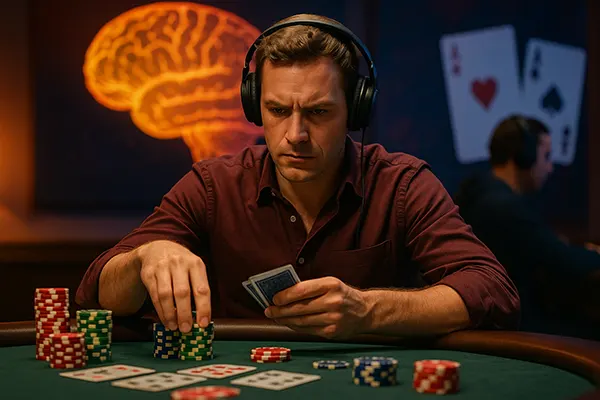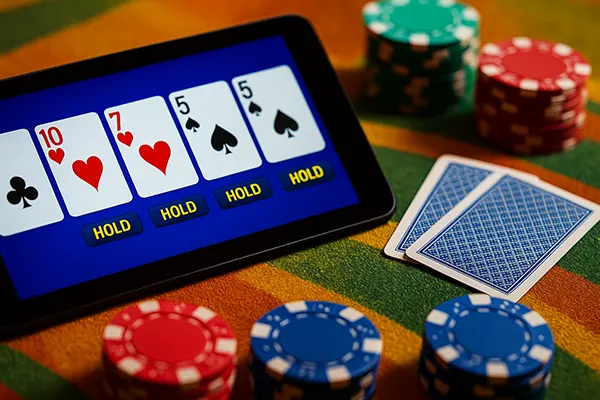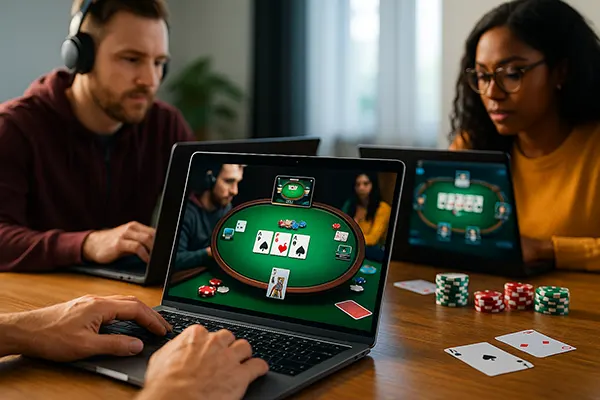
The Influence of Neuromarketing on Poker Players
Neuromarketing has become a powerful tool in the gambling industry, particularly in poker, where psychological factors often determine how long players stay at the table and how much they are willing to risk. By applying neuroscience insights, operators create strategies that appeal to human behaviour at a subconscious level, making participation more engaging and, at times, harder to resist. In 2025, these methods continue to evolve with technological innovation, shaping the way players interact with poker environments both online and offline.
Neuromarketing Strategies in Poker
One of the most common neuromarketing techniques used by poker operators is colour psychology. Warm colours such as red and gold are often integrated into game designs to stimulate excitement, while cooler shades may be applied to maintain calm during prolonged sessions. These colour patterns are not chosen by chance but are based on well-documented neurological responses.
Sound design also plays a crucial role. Short celebratory tones for small wins or dramatic music for big victories influence how the brain perceives reward. Even minor positive reinforcement can trigger dopamine release, encouraging players to continue playing. In poker rooms, background music is carefully selected to sustain focus while subtly maintaining a sense of urgency.
Interface design and user flow are another aspect. Operators increasingly rely on data-driven layouts that reduce friction when placing bets or re-entering a game. By minimising obstacles and highlighting call-to-action buttons, they increase the likelihood of repeated decisions without players being fully aware of the psychological nudges behind them.
The Role of Subconscious Triggers
Subconscious triggers are central to neuromarketing in poker. Visual cues, such as chips stacked in certain ways or highlighted buttons, can guide behaviour without overt instruction. These design choices exploit cognitive shortcuts that the brain takes when processing information quickly.
Emotional storytelling is another tool. Operators often use narratives in their promotions, linking poker sessions to themes of achievement, mastery, or exclusivity. Such messages appeal to identity and self-perception, which are powerful drivers of human motivation, even when the individual is unaware of the influence.
In digital environments, operators track micro-movements, from cursor hovering to reaction times, allowing algorithms to adapt offers in real time. This integration of behavioural data with neuromarketing principles means that the poker experience feels personalised, even when the player is responding to subconscious signals rather than rational choice.
Technological Integration in 2025
Advancements in 2025 have amplified the application of neuromarketing. Artificial intelligence now analyses biometric data in real time, including facial expressions and heart rate, especially in live poker broadcasts. These insights help tailor the experience to sustain attention and maximise emotional involvement.
Virtual reality poker environments enhance immersion by replicating real-life casino settings. In VR, neuromarketing principles are applied through spatial design, interactive elements, and ambient sounds that heighten psychological engagement. Such environments give operators greater control over sensory input, making subconscious influence even stronger.
Mobile poker applications increasingly employ haptic feedback—vibrations timed with specific events—to reinforce emotional reactions. For example, a subtle vibration when receiving strong cards reinforces positive anticipation, nudging players to remain engaged longer.
Ethical Concerns and Regulation
The growing use of neuromarketing in poker raises ethical questions. Critics argue that subconscious manipulation risks exploiting vulnerable players, particularly those prone to compulsive behaviour. Since the techniques bypass rational decision-making, the line between entertainment and manipulation becomes blurred.
Regulators in Europe and beyond are beginning to scrutinise these methods. Stricter transparency requirements are under discussion, including rules that limit the use of biometric data or require disclosure of certain neuromarketing practices. The goal is to balance innovation with responsible gambling principles.
Meanwhile, some operators are adopting voluntary measures. These include tools that give players more control, such as reminders of time spent playing or customisable sound and visual settings. By introducing safeguards, operators attempt to demonstrate that neuromarketing can be used responsibly rather than purely as a mechanism of persuasion.

Future Outlook for Neuromarketing in Poker
Looking ahead, neuromarketing is expected to become even more sophisticated. Developments in brain–computer interfaces may allow direct measurement of attention and emotional states, leading to environments that respond in real time to subconscious signals. Such technology could revolutionise poker experiences but will also intensify ethical debates.
Cross-industry collaborations are also emerging. Insights from consumer technology, gaming, and psychology are being combined to refine strategies. Operators increasingly rely on neuroscientists and behavioural economists to design poker ecosystems that keep players engaged longer while appearing seamless and natural.
For players, understanding these techniques is becoming an essential part of informed participation. Just as knowledge of poker strategy helps at the table, awareness of neuromarketing methods can empower individuals to recognise when their behaviour is being influenced at a subconscious level.
Balancing Innovation and Responsibility
The success of neuromarketing in poker will ultimately depend on how well innovation is balanced with ethical responsibility. Operators who push too far risk reputational damage and regulatory backlash, while those who apply principles transparently can build stronger trust with players.
Industry experts emphasise that responsible use of neuromarketing could enhance enjoyment without undermining autonomy. For example, subtle cues may help players remain focused or reduce stress, rather than simply driving higher spending. Such approaches highlight the potential for positive application when guided by clear ethical frameworks.
In the coming years, transparency, regulation, and player education are likely to become central themes. By aligning advanced psychological tools with responsible practices, the industry can create environments that are engaging yet fair, offering entertainment without sacrificing trust.



